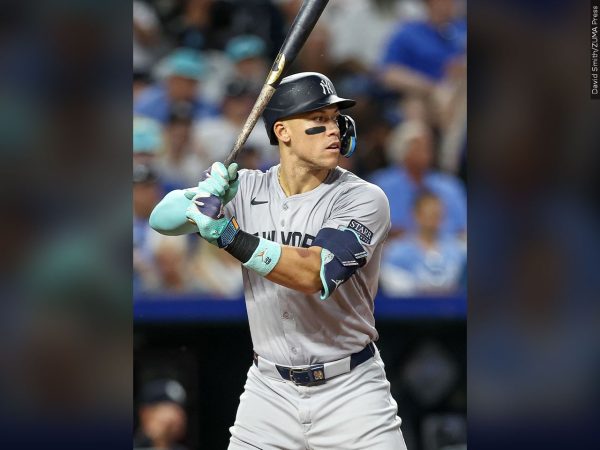
Major League Baseball is entering its third year of the new rule changes, which commissioner Robert Manfred introduced entering the 2023 season. The three significant changes implemented before the season were a pitch timer, shift limitations, and larger bases, all aimed at improving the quality of life in the sport.
On January 15, 2025, Major League Baseball implemented a new rule for Minor League Baseball, specifically its Double-A and Triple-A levels, introducing a 20-second pitch clock to reduce the length of affiliate baseball games. Since implementing a pitch clock in Minor League Baseball, the average game length has dropped by 26 minutes compared to before the change.
Such a drastic improvement in the time of play almost entirely forced the commissioner to make the change, introducing a pitch clock to Major League Baseball for the first time in its illustrious history, as well as a flurry of other amendments to perfect the pace of play.
In terms of the specific rules, there is a 30-second timer between batters. Between pitches, there is a 15-second timer with the bases empty and a 20-second timer with runners on base. Batters must also be alert and ready to swing with eight seconds remaining on the clock; otherwise, the umpire will apply an automatic ball to the count, which can result in a strikeout. On the other hand, if the pitcher is not in their motion by the time the clock hits zero, an automatic ball gets applied to the count.
“I’ve been a pitcher only for years now, and I’ve always pitched at a fast rhythm,” said Brooks Coile, a freshman pitcher for the GCSU club baseball team. “I think the pitch clock makes the game more entertaining and removes a lot of the delays. It’s a sport, not chess.”
On top of that, the pitcher is now limited to two disengagements, pick-offs, or step-offs per mound per plate appearance. With a runner on base, if a pitcher disengages from the mound for a third time and fails to pick off the baserunner, the runner will be awarded advancement on the base paths. Finally, to reduce game time, stricter mound visit rules were introduced before the 2023 season, limiting teams to five visits per game, with a few exceptions.
In 2024, Major League Baseball made a few minor adjustments to the pitch clock and mound visit limitation rules, aiming to balance the length of each game better. The allotted time for the pitch clock with runners on base decreased by two seconds from 20 to 18 seconds. Also, when a pitching change occurs, there is a minimum of two minutes on the pitch clock once the pitcher steps onto the outfield warning track. Finally, the allotted five mound visits per game were reduced to four, which had little impact. However, according to Anthony Castrovince of Major League Baseball, the average number of mound visits per team per game was only 2.3 in 2023.
According to the data tracked by Major League Baseball, in 2023, the implementation of the pitch clock, disengagement rules, and mound visit limitations decreased the average time of a Major League Baseball game to 2 hours and 39 minutes, a 24-minute decrease from 2022 and a 31-minute reduction from 2021. The average mark also became the shortest time on average since 1985.
“It’s funny, because I just finally started figuring out the sport, and now they’re changing it,” said Ethan Mattace, a freshman chemistry major. “But, I do like how much quicker the games are. It used to feel super slow, but it’s much more fun now.”
Alongside the pitch clock also came limitations on defensive shifting. On August 29, 2014, the Los Angeles Dodgers used a shift iteration that even surprised legendary broadcaster Vin Scully. With one out in the bottom of the twelfth inning and the bases loaded against the division rival San Diego Padres, left-handed batter Seth Smith stepped up to the plate, who, according to Baseball Savant, was shifted against on average 66.9% in the years Statcast tracked shift-percentage.
In return, Mattingly countered by using five infielders, using second baseman Dee Strange-Gordon, shortstop Miguel Rojas, first baseman Adrián González and centerfielder Andre Ethier as a wall alongside the right-side infield dirt.
Third baseman Justin Turner was the only player on the left side of the infield. Just as Mattingly predicted, Smith pulled the baseball directly to Gordon, who collected the forceout at home and came within inches of securing an inning-ending double play, as the throw from catcher A.J. Ellis was too late.
Los Angeles, despite the predictive defensive placement, lost on a walk-off single from Grandal in the next at-bat. The oddity of it all is that it will never occur legally within the game for the remainder of the sport’s history. A shift that drastic is now impossible in Major League Baseball, thanks to the rules implemented in 2023.
According to the new limits, four infielder’s must be on the infield dirt when the pitcher is on the rubber of the mound, infielders must also position themselves on the respective side of the infield, ie. first and second baseman on the right side and the shortstop and third baseman on the left side.
If this alignment is incorrect by the time of the pitch, the offense can choose between an automatic ball or the result of the play. However, there is a caveat to the limitations: defensive alignment does permit a fifth infielder in the representation of an outfielder coming onto the infield dirt or shallow outfield grass, but it prohibits a four-outfielder alignment.
On July 23, 2023, Bud Black and the Colorado Rockies set up a five-infielder spread; however, because of the new limitations, the most Colorado could do with the shift is position infielder’s in from the “straight-up” alignment and use left fielder Harold Castro up the middle, in front of the second base bag.

